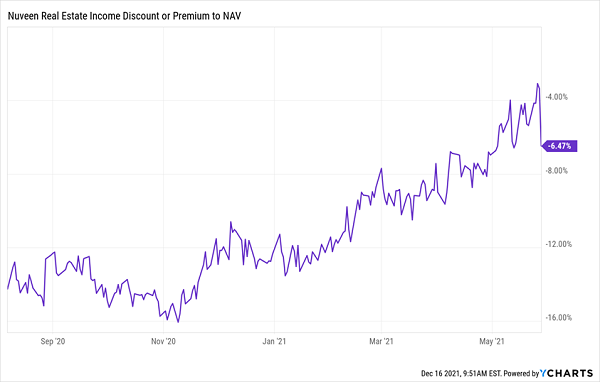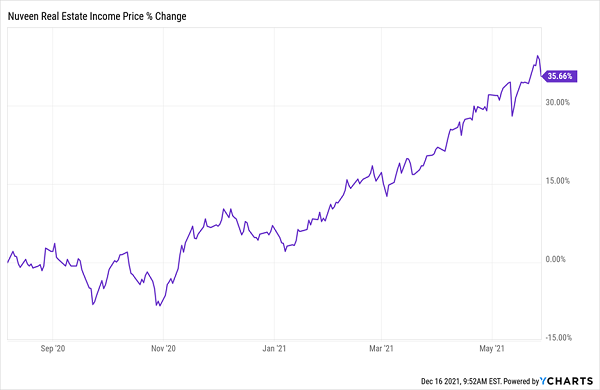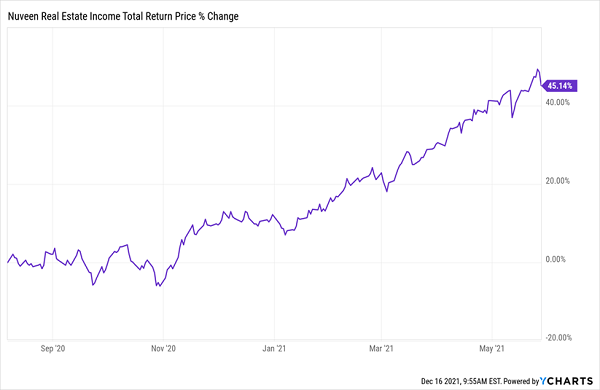Think about it for a moment: when was the last time you read anything about closed-end funds (CEFs), an overlooked asset class that throws off 7%+ average dividends?
It's a shame that CEFs are rarely discussed outside Wall Street circles because they're perfect for anyone who needs income these days.
Smaller CEFs Give You Big Payouts And "Baked in" Upside
We're going to bust through that barrier and look at how we can use CEFs to boost our income streams and our net worth, too.
We can dial ourselves in for even more significant gains when we focus on smaller CEFs. These "small fry" have less than a billion dollars in assets under management. And because they're tiny and overlooked, many of them trade at huge discounts.
Also, these funds are too small to attract the attention of investment banks and hedge funds because even if one of these big players bought one of these funds and it doubled, it would barely move the needle on their investment portfolios.
Of course, we're okay with that because it leaves more room for us to scoop up bargains. There are three straightforward reasons why smaller CEFs are a must-own for just about every investor.
- Those huge yields: As I said, CEFs yield 7% on average, and some boast safe dividends as high as 10% or even more.
- CEFs get you assets at a discount: Because CEFs are off the radar, they often trade at a market price below the value of their portfolios—something you never see in mutual funds and ETFs. When this happens, we say a CEF is trading at a discount to net asset value (NAV). Buying a CEF—particularly a tiny CEF—at a discount can send you on a wild profit ride as the discount vanishes, catapulting its price higher.
- Many CEFs crush their indexes: (In some asset classes, almost all of them beat the indexes, some by a considerable margin).
The rules of this game are pretty simple—and incredibly profitable
- Buy a high-quality CEF at a significant discount.
- Collect outsized dividends while you hold your CEF.
- Wait for the CEF's discount to shrink or for it to trade at a premium.
- Collect your capital gains on top of the dividends you've been pocketing the whole while.
Some of your best opportunities in CEFs will come when a fund is in an established uptrend but, because of the inefficiencies in the CEF market, still trades at a big discount.
For example, look at the PIMCO Energy & Tactical Credit Opps Fund (NYSE:NRGX), which has just $570 million in assets under management. It yields 5.4%, is up 66% in 2021 as of this writing, and has crushed its index. Yet it trades at a 16% discount to NAV.
Big Returns In An Overlooked Fund

NRGX isn't getting the attention it deserves because its smaller size keeps it off many CEF investors' radar. But NRGX has traded at premiums to NAV as recently as early 2020; that history is another "tell" that a premium is on the table when CEF investors (inevitably) rediscover NRGX. When that premium arrives, it'll inflate the price.
To show you our "discount slingshot" in action, let me take a real example of a trade I recommended to readers of my CEF Insider service. In August 2020, I issued a buy call on the Nuveen Real Estate Fund (NYSE:JRS), a smaller CEF that sports a $357-million market cap as I write this.
JRS holds large-cap real estate investment trusts (REITs) like warehouse operator Prologis (NYSE:PLD), apartment landlord AvalonBay Communities (NYSE:AVB) and data-center REIT Digital Realty Trust (NYSE:DLR). It traded at an outsized 14% discount to NAV at the time. Just nine months later, that discount had been cut to 6.5%.
A Discount Disappears

By then, we'd booked a nice 36% price gain.

That's a great trade on its own, but CEFs are cash machines, so investors got an eye-popping 9.8% annualized income stream while waiting for their 36% profits. Combine income and capital gains, and the total return comes in at 45.1% over just nine months.

While this is possible with all CEFs, smaller funds like JRS are the best target. Funds with total assets between $200 million and $1 billion, in many cases, get the fastest capital gains because a rush of investors can more easily move their prices. At the same time, they give us enough liquidity to get in and out as necessary.
And that's just one reason why CEFs are a key to financial freedom. They also provide diversification (some CEFs get you into every corner of the world and just about every sector) and exposure to different asset classes (from high-yield and municipal bonds to individual sectors, like tech and healthcare stocks and preferred shares).
Finally, because Often-well-connected managers run CEFs, they give you access to assets that aren't easily bought on open markets (like private equity in high-growth tech companies, for example).
Sure, there's a lot of uncertainty hanging over 2022, but we CEF investors have a great way to cash in on it: buy high-yielding CEFs like the ones we just discussed. CEFs are perfect for 2022, which I expect to be a stock-picker's year, where individual stocks and sectors will stand out—and others will slip.
Disclosure: Brett Owens and Michael Foster are contrarian income investors who look for undervalued stocks/funds across the U.S. markets. Click here to learn how to profit from their strategies in the latest report, "7 Great Dividend Growth Stocks for a Secure Retirement."
